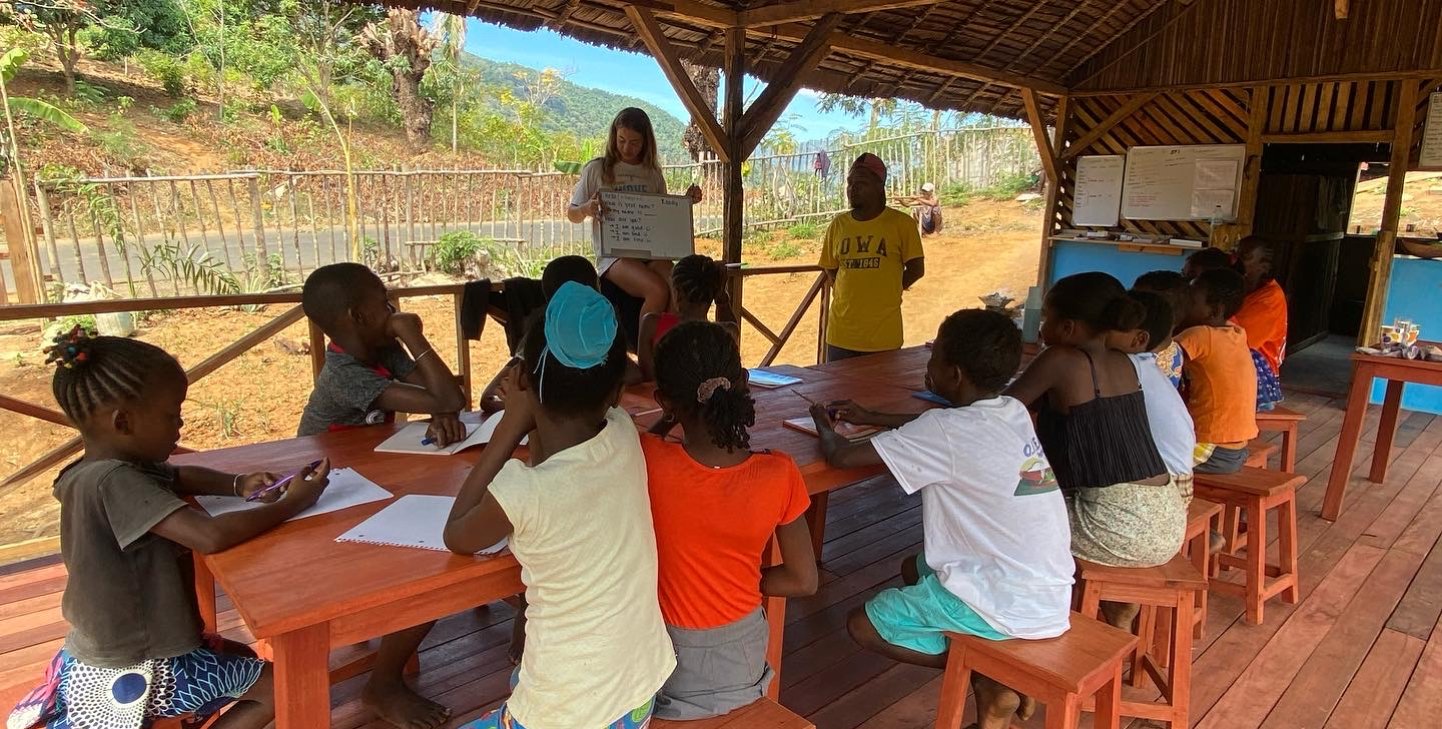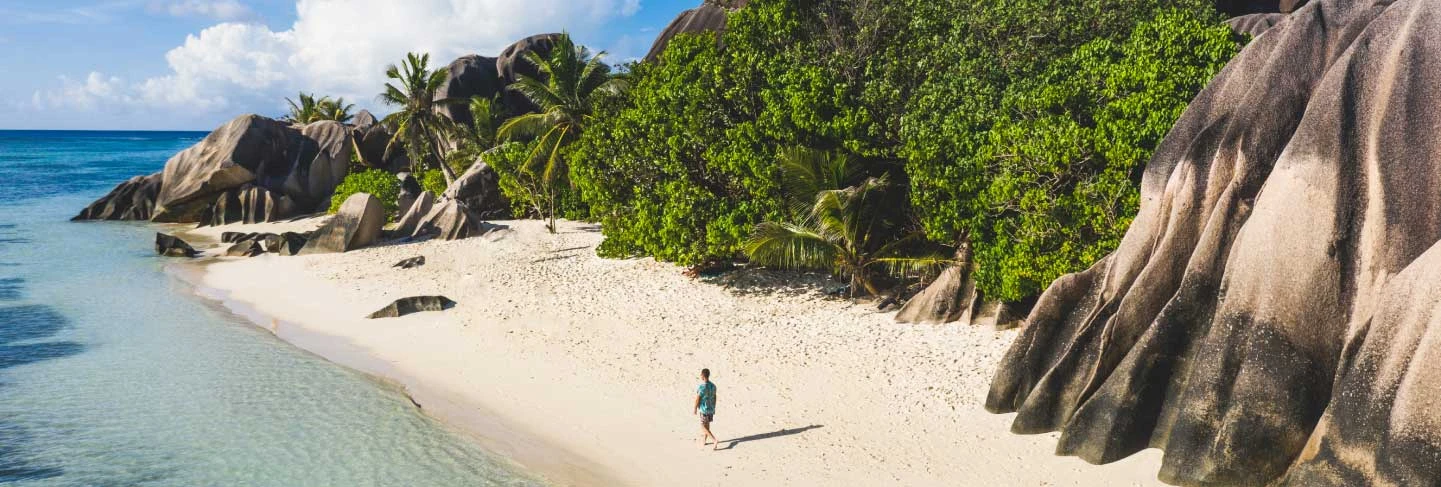Community-based Conservation Volunteer Programs
Work with local communities on conservation policy.
Successful long-term conservation projects require engaging with local communities – bridging the gap between science and local communities. By working together with local people to restore the natural balance of ecosystems, we can create a better future for both the environment and the local communities.
Through the collaboration of local communities and different stakeholders, such as authorities, researchers and scientists, the goal of community-based conservation is to protect biodiversity.
What are effective examples of community conservation projects?
Co-management or joint management of protected areas, and conservation of species or ecosystems using community support. Community-based conservation involves combining local peoples’ traditional knowledge of the environment with modern scientific knowledge of scientists. This combination leads to increased biodiversity and better management of protected areas.
How do we involve communities in conservation efforts?
- Gaining the trust of local communities.
- Identifying problems that need urgent attention.
- Identifying individual community members, local NGOs or forums.
- Empowering local communities in making decisions.
- Facilitating dialogue between stakeholders.
- Involving communities in cooperative conservation activities.
- Leaving ownership to the local community and helping to build complex federations or networks for a stronger community voice.
- Creating conservation influencers for regional change.
What activities are conducted at GVI community conservation programs?
Engaging effectively with communities requires a solid foundation of trust based on mutual respect and an understanding of priorities. Working with local communities, we develop strategies for the sustainable use of resources and conservation of landscapes, seascapes and associated fauna and flora, including endangered species and protected habitats and ecosystems. Examples of activities we carry out in community conservation programs are:
- Community monitoring of fish landing sites, forests and animals.
- Setting up community-based conservation areas.
- Education and awareness programs about environmental conservation.
- Generating local ecological knowledge about plants and animals.
- Ethnobotanical research and documentation.
What kind of tasks will volunteers participate in?
- Assisting in monitoring community areas.
- Data collection at fish landing sites, forests and animals.
- Interviews with fishers, mahouts (a person who looks after elephants) and community members with regard to use of resources.
- Working with community members to empower them to take conservation decisions.
- Assisting with community environmental education.
Which UN SDGs will participants be contributing towards?
- UN SDG #13, Climate Action
- UN SDG #14, Life Below water
- UN SDG #15, Life on Land
- UN SDG #17, Partnerships for the Goals
Which partners will participants be working with, and what specific goals of the partners are being supported?
We work with local communities, government institutions, and NGOs, to support the activities of partner institutes.
- On the island of Nosy Be in Madagascar we work with Ampasipophy Lokobe, the locally-managed protected conservation area. Here we support community members in the cooperative conservation of forests and associated wildlife.
- We work with two partners in Thailand. In Phang Nga we work with the Phang Nga Locally Managed Marine Protected Area, where we engage in coastal conservation activities, including beach cleans, beach erosion studies and empowering individuals in managing marine ecosystems and associated species and resources. In Chiang Mai, we work with the Huaypakkoot Elephant Community Foundation, where we study the behaviour of elephants and document local biodiversity.
- In Dawasamu, we work with the Fiji Locally Managed Marine Area Network, documenting the marine resource catch at the fish landing sites and supporting local fishers in effective marine resource management.
Filter programs
Nosy Be, Madagascar
In Madagascar we support the local communities and villages that surround Lokobe National Park. We also work to preserve the Lokobe forest (the last remaining primary rainforest on the island). Flora and fauna found in the area includes ylang-ylang, orchids, palm trees, lush ferns, panther chameleons and black lemurs.
The island of Nosy Be has an estimated population of around 115,000 people, with the Sakalava people making up the majority of Malagasy residents and Sakalva Malagasy being the main dialect spoken on the island. The population where GVI’s base is located is approximately 400. There are also significant Indian, French, and Italian populations on the island. The main religions are Christian and Islam, which are evenly split near Nosy Be. While elsewhere in the country the predominant religion is Christian (at around 95%), all religions are integrated with traditional beliefs, known locally as Fomba Gasy.
Main income streams are fishing, agriculture (main crops are coffee , vanilla , pepper, ylang-ylang and sugar cane) and tourism. Local communities and villages have joined together to form their own locally-managed area, with the aim of preserving some of the last remaining primary rainforests in the country. Volunteers on our base will be involved in documenting traditional locally-managed areas, local traditions and customs, and resource use patterns.
Volunteers can also engage in teaching and capacity building for local staff and community members through conducting biodiversity surveys, education and awareness activities or by engaging in teaching, women’s empowerment, and health programs.
Chiang Mai, Thailand
In Chiang Mai our focus is on supporting the Huaypakkoot Elephant Community Foundation. Here we conduct behaviour studies of elephants and documentation of local biodiversity. The area is known for its deciduous forest, gibbons and Asian elephants.
With roughly 400 people living in Huay Pakoot, the small Karen hill tribe village is situated in a remote mountainous area. This close-knit farming community has been located in the same area for over 300 years. While following the principles of Buddhism, the people of Huay Pakoot also hold traditional Animism beliefs. As a result, the elephants have particular spiritual significance. However, due to the trend of urbanisation and a ban on logging, traditional elephant-keeping practices have changed over the years. Many villagers now rent their elephants to tourist camps in order to make a living. There are currently sixty elephants owned by families in the village, the majority of which now work in Chiang Mai elephant camps.
However, there are eight elephants (four adult females, one bull elephant, and three juveniles) that are an integral part of village life in Huay Pakoot. Mahouts (elephant keepers) are responsible for feeding, walking and bathing their elephants. You will learn how to monitor elephant behaviour and health, and source elephant medicine from the forest – knowledge that is passed down from generation to generation. On a volunteer program in Chiang Mai you will primarily be engaging with Mahouts and local school children, to conduct environmental awareness workshops.
Phang Nga, Thailand
Our volunteer programs in Phang Nga focus on documenting the marine resource catch at the fish landing sites and supporting local fishers in effective marine resource management.
Commonly-caught fish include snappers, trevallies, groupers, barracudas and triggers. While the region has extensive coral reef and mangrove ecosystems, the coastal and marine systems have been impacted by a series of natural catastrophes, such as the 2004 tsunami, cyclones and bleaching events. Marine megafauna include leatherback turtles, olive ridley sea turtles, hawksbill sea turtles, and striped dolphins.
Ban Nam Khem (meaning “Place of Salty Water”) is a small village on the Andaman Sea in southern Thailand. It’s estimated that less than 5,000 people live in Ban Nam Khem, with about 85% practicing Islam. The population earns their living through a rubber plantation, a small-scale fishery and providing services to the tourism sector. The local industry remains relatively undeveloped with an overriding dependence on traditional fishing, supplemented by seasonal small-scale arable farming, livestock keeping, and ecotourism opportunities. There are approximately 2,000 people involved in fishing. Both men and women play an important role in fishing activities. While men go out on fishing trips, women are involved in cleaning, gleaning and selling fish in local markets. In Phang Nga volunteers will be involved in documenting local fish catches, beach cleanup activities, documenting coastal wildlife and understanding patterns in the use of local resources.
Dawasamu, Fiji
In Fiji our programs focus on documenting the marine resource catch at fish landing sites and supporting local fishers in effective marine resource management. The most commonly-caught fish are giant trevally, Spanish mackerel and coral trout. In the region’s coral reef ecosystem the main megafauna include dolphins, turtles, reef sharks, rays and sea snakes.
Silana is a small fishing village in the Dawasamu District of Tailevu Province. The people of Dawasamu depend on both the land and the sea for subsistence – and their lives are inextricably linked to the environment and their natural resources. The village way of life that has existed for generations still exists, with villages still headed by chiefs and run by village headmen. As a result, the importance of protecting these resources through sustainable management is crucial. Fish are an important source of nutrition and livelihood for the community. iTaukei women fishers prioritise fishing for their families as it provides their main source of protein. The waters surrounding Silana house a variety of fish species, including giant trevally, Spanish mackerel and coral trout.
On a community-based conservation volunteer program you’ll learn the art of handline fishing, reading the tides, feeding times, and breeding patterns – knowledge that is ingrained in iTaukei culture. You will primarily be engaging with iTaukei women fishers – assisting with monitoring daily catches and marine conservation initiatives such as surveying corals, beach cleanups and providing environmental education and information regarding marine debris.
How can I volunteer in community-based conservation programs?
You can look for opportunities on our website where you can participate in community-based volunteer conservation programs. On these programs participants work in collaboration with local communities on conservation activities.
What is a participatory approach in a community conservation program?
Participatory planning in community conservation builds trust between individuals, organisations, the community, and among the individuals involved, with the community and individuals in the community treated equally throughout the program. Starting with a foundation of trust and ensuring the community is meaningfully involved in planning, then ensuring that meaningful participation in executing the program is followed – including interpreting and owning the results. This trust serves as a foundation for future community development and conservation, and is an important step in protecting biodiversity and the welfare of communities.






























